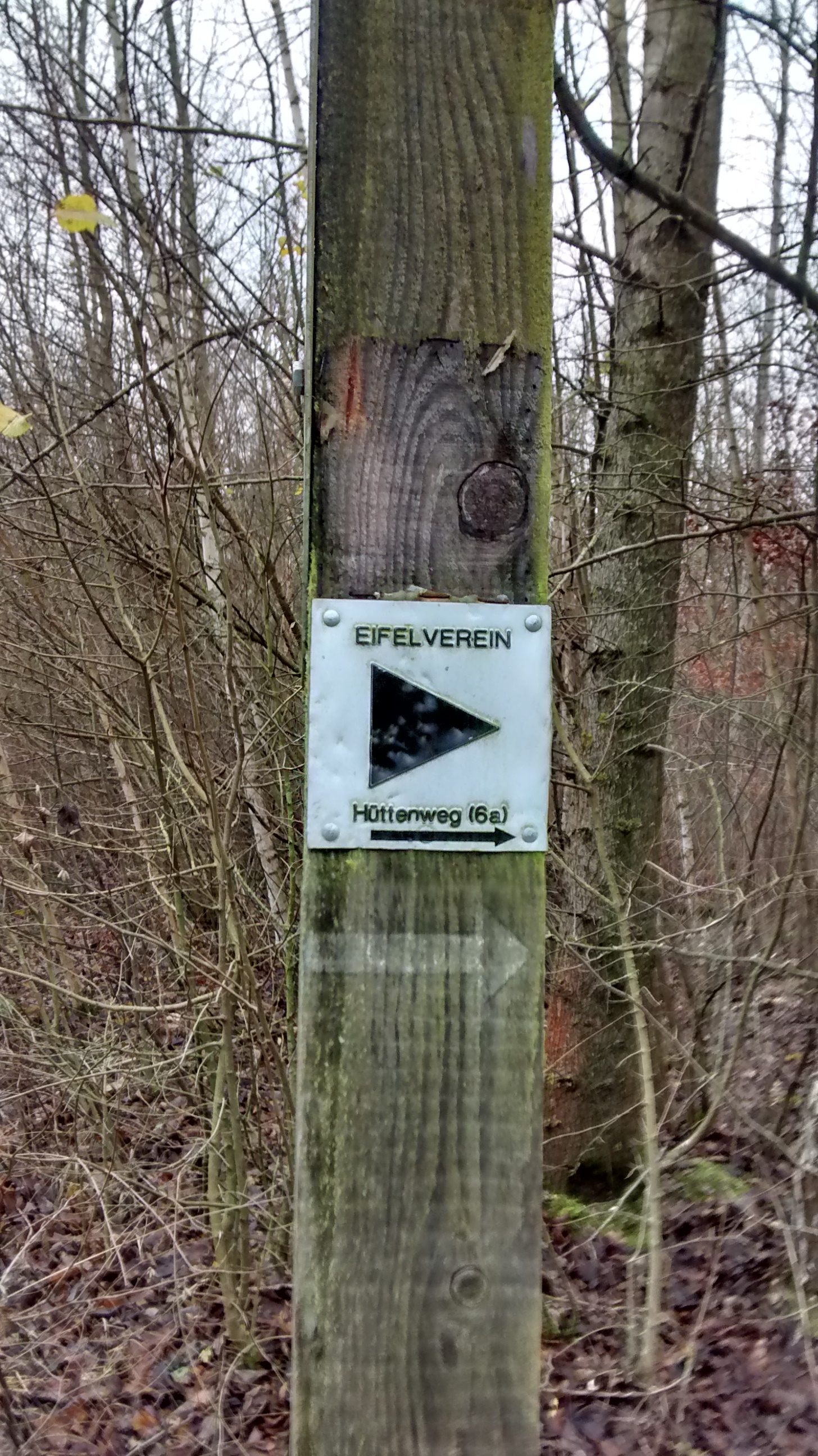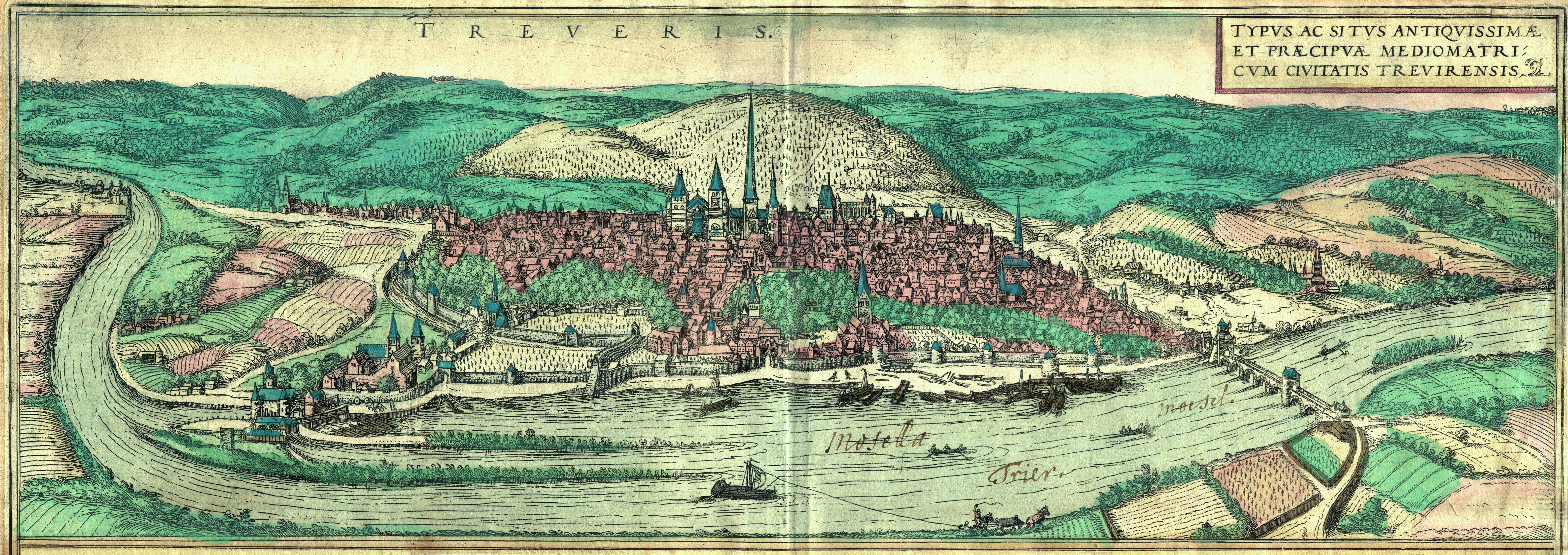|
Castles Of Manderscheid
Near the Eifel town of Manderscheid are the ruins of two castles, the castles of Manderschied, whose history and location reflect the mediaeval conflict of interest between the Electorate of Trier and the Duchy of Luxembourg. Oberburg The Oberburg or "Upper Castle" is located on a hilltop that was levelled in order to construct the castle. It had, as can still be seen from the ruins, an almost triangular enceinte and a five-story ''bergfried'' or fighting tower that has been made accessible again. From the ''bergfried'' there is a clear view of the Niederburg or "Lower Castle", the town of Manderscheid and the countryside of the Lieser valley. The place name of Manderscheid is first recorded in a deed of gift by Ottos II to the Archbishop of Trier dating to 973. This is not, however, as is often maintained in the literature, the earliest record of the castle, which is first historically known from the feud over St. Maximin's Abbey in front of Trier between Count Henr ... [...More Info...] [...Related Items...] OR: [Wikipedia] [Google] [Baidu] |
Adalberon Of Munsterol
Albero de Montreuil (german: Albero, Adalbero von Munsterol) (c. 1080 – 18 January 1152) was Archbishop of Trier from 1132 to 1152 and is the subject of the '' Gesta Alberonis''. Albero was born near Toul in Lorraine, a scion of the petty noble house of Thicourt-Montreuil; his parents were Gerard of Thicourt-Montreuil and Adelaide of Dampierre. After becoming Archdeacon of the churches of Verdun, Toul, and Metz, he became Provost of the church of St. Gangulphus (french: Collégiale Saint-Gengoult, links=no) in Toul and of the Augustinian monastery of St. Arnulf of Metz (german: Stift Sankt Arnual, links=no) in Saarbrücken, all then within the borders of the Holy Roman Empire. Here he became identified with the reform party opposed to lay investiture, gaining thereby the enmity of Bishop Adalbero IV, and went in person to Rome to secure the bishop's deposition from Pope Paschal II. On his return he brought about the election of Theotger, Abbot of the Benedictine monastery o ... [...More Info...] [...Related Items...] OR: [Wikipedia] [Google] [Baidu] |
Heritage Sites In Rhineland-Palatinate
Heritage may refer to: History and society * A heritage asset is a preexisting thing of value today ** Cultural heritage is created by humans ** Natural heritage is not * Heritage language Biology * Heredity, biological inheritance of physical characteristics * Kinship, the relationship between entities that share a genealogical origin Arts and media Music * ''Heritage'' (Earth, Wind & Fire album), 1990 * ''Heritage'' (Eddie Henderson album), 1976 * ''Heritage'' (Opeth album), 2011, and the title song * Heritage Records (England), a British independent record label * Heritage (song), a 1990 song by Earth, Wind & Fire Other uses in arts and media * ''Heritage'' (1935 film), a 1935 Australian film directed by Charles Chauvel * ''Heritage'' (1984 film), a 1984 Slovenian film directed by Matjaž Klopčič * ''Heritage'' (2019 film), a 2019 Cameroonian film by Yolande Welimoum * ''Heritage'' (novel), a ''Doctor Who'' novel Organizations Political parties * Heritage ( ... [...More Info...] [...Related Items...] OR: [Wikipedia] [Google] [Baidu] |
Castles In Rhineland-Palatinate
A castle is a type of fortified structure built during the Middle Ages predominantly by the nobility or royalty and by military orders. Scholars debate the scope of the word ''castle'', but usually consider it to be the private fortified residence of a lord or noble. This is distinct from a palace, which is not fortified; from a fortress, which was not always a residence for royalty or nobility; from a ''pleasance'' which was a walled-in residence for nobility, but not adequately fortified; and from a fortified settlement, which was a public defence – though there are many similarities among these types of construction. Use of the term has varied over time and has also been applied to structures such as hill forts and 19th-20th century homes built to resemble castles. Over the approximately 900 years when genuine castles were built, they took on a great many forms with many different features, although some, such as curtain walls, arrowslits, and portcullises, were ... [...More Info...] [...Related Items...] OR: [Wikipedia] [Google] [Baidu] |
Daniel Meisner
Daniel is a masculine given name and a surname of Hebrew origin. It means "God is my judge"Hanks, Hardcastle and Hodges, ''Oxford Dictionary of First Names'', Oxford University Press, 2nd edition, , p. 68. (cf. Gabriel—"God is my strength"), and derives from two early biblical figures, primary among them Daniel from the Book of Daniel. It is a common given name for males, and is also used as a surname. It is also the basis for various derived given names and surnames. Background The name evolved into over 100 different spellings in countries around the world. Nicknames (Dan, Danny) are common in both English and Hebrew; "Dan" may also be a complete given name rather than a nickname. The name "Daniil" (Даниил) is common in Russia. Feminine versions (Danielle, Danièle, Daniela, Daniella, Dani, Danitza) are prevalent as well. It has been particularly well-used in Ireland. The Dutch names "Daan" and "Daniël" are also variations of Daniel. A related surname developed ... [...More Info...] [...Related Items...] OR: [Wikipedia] [Google] [Baidu] |
Eifel Club
The Eifel Club (german: Eifelverein) is one of the largest rambling clubs in Germany with a membership of 28.000. Its purpose is the "maintenance of local customs, the protection and care of monuments to which it is particularly committed". The Eifel Club was founded on 22 May 1888 in the event hall at Bad Bertrich by Adolf Dronke and, in 2013, it celebrated its 125th anniversary. volksfreund.de, Internet release by the Trierischer Volksfreund, 25 May 2013 Karl Kaufmann, after whom one of the main footpaths through the Eifel (the ''Karl Kaufmann Way'' between Brühl an ... [...More Info...] [...Related Items...] OR: [Wikipedia] [Google] [Baidu] |
Frans Hogenberg
Frans Hogenberg (1535–1590) was a Flemish and German painter, engraver, and mapmaker. Hogenberg was born in Mechelen in Flanders as the son of Nicolaas Hogenberg.Frans Hogenberg in the In 1568 he was banned from by the because he was a protestant and had printed engravings sympathizing with the .< ... [...More Info...] [...Related Items...] OR: [Wikipedia] [Google] [Baidu] |
Sovereign Territory
Westphalian sovereignty, or state sovereignty, is a principle in international law that each state has exclusive sovereignty over its territory. The principle underlies the modern international system of sovereign states and is enshrined in the United Nations Charter, which states that "nothing ... shall authorize the United Nations to intervene in matters which are essentially within the domestic jurisdiction of any state." According to the idea, every state, no matter how large or small, has an equal right to sovereignty. Political scientists have traced the concept to the Peace of Westphalia (1648), which ended the Thirty Years' War (1618–1648) and Eighty Years' War (1568–1648). The principle of non-interference was further developed in the 18th century. The Westphalian system reached its peak in the 19th and 20th centuries, but it has faced recent challenges from advocates of humanitarian intervention. Principles and criticism A series of treaties make up the Peace of Wes ... [...More Info...] [...Related Items...] OR: [Wikipedia] [Google] [Baidu] |
Bridgehead
In military strategy, a bridgehead (or bridge-head) is the strategically important area of ground around the end of a bridge or other place of possible crossing over a body of water which at time of conflict is sought to be defended or taken over by the belligerent forces. Bridgeheads typically exist for only a few days, the invading forces either being thrown back or expanding the bridgehead to create a secure defensive lodgement area, before breaking out into enemy territory, such as when the U.S. 9th Armored Division seized the Ludendorff Bridge at Remagen in 1945 during World War II. In some cases a bridgehead may exist for months. Etymology ''Bridgehead'' ( French ''tête de pont'') is a High Middle Ages military term, which before the invention of cannons meant the military fortification that protects the end of a bridge. Like many older terms, the meaning of the word drifted with the passage of time, becoming used for something not exactly true to its initial usage. Wit ... [...More Info...] [...Related Items...] OR: [Wikipedia] [Google] [Baidu] |
Louis IV (HRR)
Louis IV (german: Ludwig; 1 April 1282 – 11 October 1347), called the Bavarian, of the house of Wittelsbach, was King of the Romans from 1314, King of Italy from 1327, and Holy Roman Emperor from 1328. 20 October 1314 imperial election, Louis' election as king of Germany in 1314 was controversial, as his House of Habsburg, Habsburg cousin Frederick the Fair was simultaneously elected king by a separate set of electors. Louis defeated Frederick in the Battle of Mühldorf in 1322, and the two eventually reconciled. Louis was opposed and excommunicated by the French Pope John XXII; Louis in turn attempted to depose the pope and install an anti-pope. Louis IV was Duke of Bavaria, Duke of Upper Bavaria from 1294 to 1301 together with his elder brother Rudolf I, Duke of Bavaria, Rudolf I, was Margraviate of Brandenburg, Margrave of Brandenburg until 1323, and Electoral Palatinate, Count Palatine of the Rhine until 1329, and became Duke of Bavaria, Duke of Lower Bavaria in 1340. He ... [...More Info...] [...Related Items...] OR: [Wikipedia] [Google] [Baidu] |
Town Rights
Town privileges or borough rights were important features of European towns during most of the second millennium. The city law customary in Central Europe probably dates back to Italian models, which in turn were oriented towards the traditions of the self-administration of Roman cities. Judicially, a borough (or burgh) was distinguished from the countryside by means of a charter from the ruling monarch that defined its privileges and laws. Common privileges involved trade (marketplace, the storing of goods, etc.) and the establishment of guilds. Some of these privileges were permanent and could imply that the town obtained the right to be called a borough, hence the term "borough rights" (german: Stadtrecht; nl, stadsrechten). Some degree of self-government, representation by diet, and tax-relief could also be granted. Multiple tiers existed; for example, in Sweden, the basic royal charter establishing a borough enabled trade, but not foreign trade, which required a highe ... [...More Info...] [...Related Items...] OR: [Wikipedia] [Google] [Baidu] |
Baldwin Of Luxembourg
Baldwin of Luxembourg (c. 1285 – 21 January 1354) was the Archbishop- Elector of Trier and Archchancellor of Burgundy from 1307 to his death. From 1328 to 1336, he was the diocesan administrator of the archdiocese of Mainz and from 1331 to 1337 (with interruptions) of those of Worms and Speyer. He was one of the most important German prelates of his age. Born in Luxembourg to the count Henry VI, he was intended for an ecclesiastic career at an early age. He studied theology and canon law at the University of Paris, for his family was on good terms with the Capetian court of France. He was only twenty-two years of age when elected Archbishop of Trier in 1307. In 1308, he was consecrated bishop by Pope Clement V in Poitiers. He quickly became one of the most influential princes in Germany, influencing the election that year of his brother Henry VII as King and Holy Roman Emperor. From 1310 to 1313, Baldwin accompanied Henry in Italy, where he was crowned emperor in Rome on 29 ... [...More Info...] [...Related Items...] OR: [Wikipedia] [Google] [Baidu] |





.jpg)